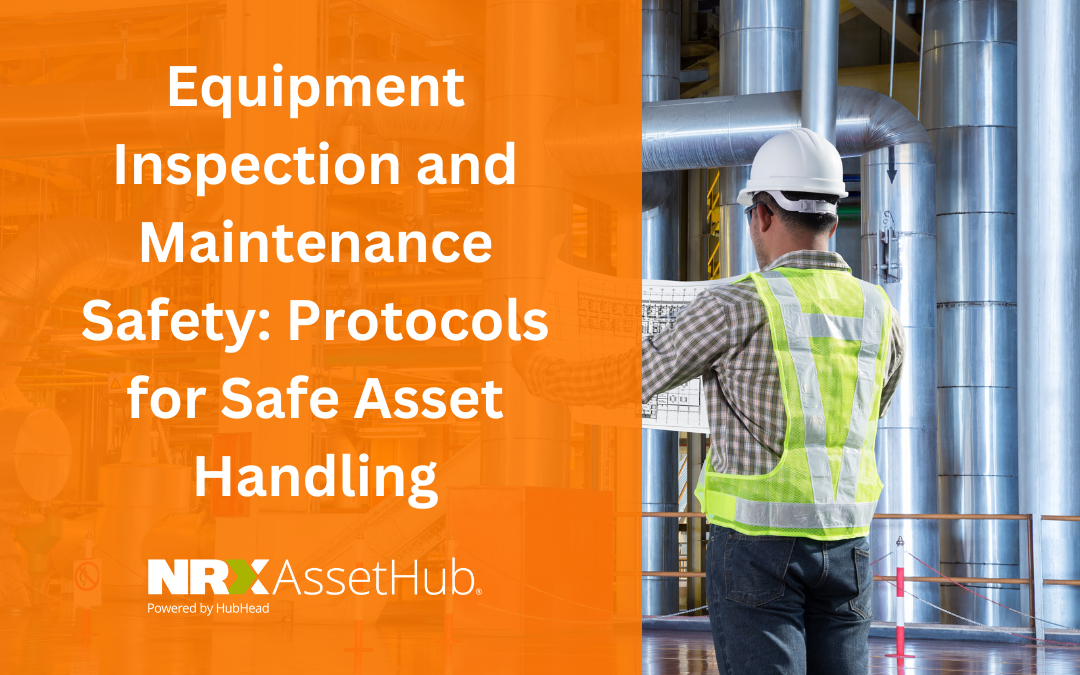Equipment inspection and maintenance are essential practices to ensure the optimal performance and longevity of assets. However, these tasks involve potential risks and hazards that can pose a threat to the safety of maintenance personnel and others in the vicinity. Implementing proper safety protocols is crucial for safe asset handling during inspection and maintenance activities. In this blog, we will explore key protocols to enhance equipment inspection and maintenance safety, creating a secure work environment for all.

Conduct Thorough Pre-Inspection Planning
Before commencing any equipment inspection or maintenance task, conduct thorough pre-inspection planning. This includes identifying potential hazards, ensuring proper tools and equipment are available, and reviewing safety procedures. Engage the maintenance team in the planning process to leverage their expertise and insights.
Use Lockout-Tagout (LOTO) Procedures
Lockout-Tagout (LOTO) procedures are vital in ensuring the safety of maintenance personnel when servicing equipment. LOTO involves isolating energy sources and affixing lockout and tagout devices to prevent accidental startup during maintenance. Strictly adhere to LOTO procedures to safeguard against unexpected equipment activation.
Wear Appropriate Personal Protective Equipment (PPE)
Personal Protective Equipment (PPE) is essential for protecting maintenance personnel from potential hazards. Provide and enforce the use of appropriate PPE, such as safety goggles, gloves, hard hats, and hearing protection. PPE should be well-maintained and replaced when necessary.
Follow Standard Operating Procedures (SOPs)
Develop and adhere to clear Standard Operating Procedures (SOPs) for equipment inspection and maintenance tasks. SOPs outline step-by-step guidelines, safety precautions, and best practices, minimizing the risk of accidents and errors.
Conduct Regular Safety Training
Ensure that all maintenance personnel undergo regular safety training and are well-versed in safe asset handling protocols. Training should cover hazard recognition, emergency response, and the proper use of safety equipment.
Perform Visual Inspections before Maintenance
Before initiating maintenance activities, conduct visual inspections to identify any obvious defects or signs of wear. Address any issues found during the inspection before proceeding with maintenance tasks.
Implement Permit-to-Work Systems
For high-risk maintenance activities, implement Permit-to-Work (PTW) systems. PTW ensures that all necessary safety precautions have been taken before starting maintenance tasks. It involves authorization and communication between different teams involved in the maintenance process.
Document and Review Incidents
Document and review any incidents or near-miss events that occur during equipment inspection and maintenance. Learning from past experiences helps identify areas for improvement and prevents recurrence of similar incidents.

Need Help
Safety is paramount when handling equipment during inspection and maintenance activities. By following these protocols, organizations can create a safe work environment for maintenance personnel and mitigate potential risks and hazards. Thorough planning, the use of LOTO procedures, proper PPE, adherence to SOPs, and continuous safety training are essential elements for safe asset handling. Prioritizing safety not only protects personnel but also ensures equipment reliability and operational efficiency. By incorporating these safety protocols into equipment inspection and maintenance practices, organizations demonstrate their commitment to the well-being of their workforce and the long-term success of their assets. Let us work together to make safety a core value in all maintenance activities, fostering a secure and productive work environment for everyone involved.
Looking for Asset Maintenance Assistance?
HubHead’s benchmarking service can provide valuable support. Our experienced consultants have helped numerous companies achieve excellence through comprehensive benchmarking analysis that leverages various benchmark types.
Contact us today by following the links below to download our brochure or book a meeting with one of our consultants.

Maximizing Equipment Reliability and Uptime: How Benchmarking EAM/CMMS Performance Can Give Your Company a Competitive Edge
Working Smarter, Not Harder: Strategies for Improving EAM/CMMS Performance Based on Benchmarking Results
Revamping Maintenance Processes: How Benchmarking Boosts Efficiency
Share this article




